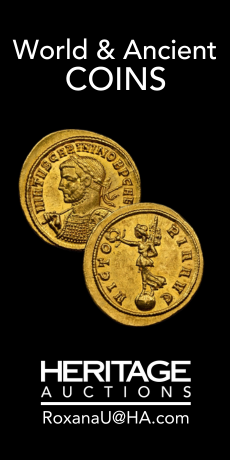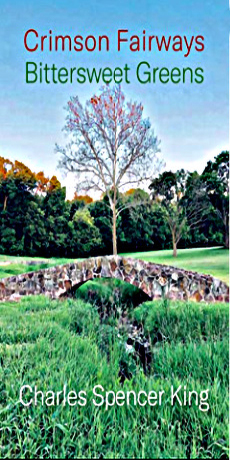Paper, Polo, Rock and Ruin
By Megan McKinney
Paul Jr. aka Michael
All the good fairies were present at the birth of Paul and Marjorie’s oldest son, Paul Jr., who inherited the family zeal for polo. In addition to an upbringing that was rich in every sense, he grew to be tall, erect, athletic and film-star handsome. He could be wild and manic, but his essential metabolism was languid, sensual. And with his good looks and strong, quiet aura, he was greatly appealing to girls. He was also rebellious, strong-willed and in and out of various schools. At fifteen, while his class at military school was touring Mexico City, young Paul decided to seize an opportunity to run away to live on the beach in Acapulco’s perfect climate. He was working there, happily eking out a living as a boat boy, when a family retainer found him and returned him to school. But in 1947, at the age of 21, Paul Jr., rebelled completely, even to changing his name, thus giving birth to one of the most flamboyant and glamorous men of the 20th century: Michael Butler.
It was a spectacular rebirth. Shortly after the name change, the new Michael became embroiled in a ménage a trois with the glamorous actress Linda Christian and her husband, Tyrone Power, possibly the handsomest of all of Hollywood’s leading men. Michael, who claims he was raised “a pagan,” was convinced by the beautiful Linda to convert to Catholicism. Conveniently, Kennedy brother-in-law Sargent Shriver stepped in, arranging for him to have instruction with his Monsignor, and Michael was christened at St. Patrick’s Cathedral in New York, with Tyrone Power as his godfather.
Also notable is Michael’s extraordinary sexual history. Not only is he probably the only person to have allegedly slept with both Audrey Hepburn and Rock Hudson, but he was also known for the “triadic weekends” on his yacht with the pre-presidential John F. Kennedy, during which, at least twice, the two spent in the company of a consenting female—one woman with the two men throughout the weekend.
According to Charles Kaiser in his book The Gay Metropolis: 1940—1996, Kennedy, recovering from his latest back surgery, was touring Europe with his wife that summer. But he left Jacqueline to join Michael and his latest girlfriend in the South of France, where they sailed on Michael’s120-foot gaff-rigged schooner. “It was just the three of us,” Butler told Kaiser. “You can imagine what happened. It was a scene. Jackie always thought I was the troublemaker. But Jack was also presidential timber in that category. He was still on crutches from the operation, but that didn’t stop him He was something extra-special. I really loved him.”
In fact, threesomes appear to have been a specialty of the bisexual Michael. According to one published account, he once disappeared from a Chicago party with a woman and spent the weekend with her in a hotel room. The unusual twist to the tale is that sometime during the rendezvous, she called her husband to join them. And he did—much to the enjoyment of all three.
Robert Clarke, an old friend of Michael’s, recalls his hyper mode and describes being “victimized by his midnight, lights out, high speed rides through uncharted fields and forests near his home in Oak Brook . . . even with the Rolls Royce top down, throttle open and radio blaring, his laugh. . . heard above all.”
In 1954, through his Hollywood connections Michael met and married actress/singer Marti Stevens, daughter of Nicholas Schenck, a former president of MGM Studios. The marriage, which began in the Mexico City house of actress Dolores Del Rio, did not last long.
Three years later he married starchy Philadelphia socialite Mary Robinson “Robin” Boyer, bizarrely settling with her in a walk-up apartment two flights above P.J. Clarke’s on Third Avenue. A few years ago society columnist Taki Theodoracopulos reminisced in Quest magazine about a long ago night of slumming in New York with Colombian billionaire Julio Mario Santo Domingo. The two international sophisticates were strolling along the seamy Third Avenue of June 1957, which Taki likened to an Edward Hopper painting, when they heard “great jazz music coming out of a third-floor flat.” They decided to crash the party after they “saw some real beauties going in.” When they had climbed the narrow dark stairway and were inside an “all-black-painted apartment . . . a tall, extremely good-looking man came up to us and asked who had brought us. We stammered and tried to mumble, but then the man put us at ease. ‘I’m Michael Butler, your host, and you are both welcome.’” Taki concluded by saying, “We’ve been good friends ever since, and I ended up playing polo with him in Paris a decade later.”
Michael’s second wife, the Vassar-educated Robin, whom he housed in the colorful flat remembered by Taki, was daughter of Francis Boyer, chairman of the pharmaceutical giant then known as Smith Kline and French. She had been raised on Philadelphia’s Main Line but for some inexplicable reason spoke English with a pronounced British accent. Following her marriage to Michael, which soon ended, Robin became an editor of Vogue and subsequently moved to London and a highly publicized life within the city’s high fashion and arts-dabbling aristocratic set. Among her admirers was the Fifth Earl of Litchfield, a photographer and cousin of the Queen.
Eventually Robin married Rupert Hambro of the English merchant banking family making her mystifying accent perfectly appropriate. According to a 2007 Daily Mail.com story on the Duchess of Cornwall, titled “The night Camilla lost her virginity—and changed the history of the royals,” Rupert Hambro was the second lover of the pre-Parker-Bowes wife of Prince Charles, when she was the teen-aged Camilla Shand.
Michael would marry once again. Loyce Stinson Hand, whom he wed in December 1962, became the mother of his only child, Adam, in 1964. The couple separated in December of that year, and ten months later Michael filed a $2 million suit against Detroit Red Wings president Bruce Norris. The charge was adultery with Loyce in three states and aboard a yacht off Florida. To which the estranged Mrs. Butler commented, “If I’m going to be auctioned off I think I’m worth more than that.” Like his father, Michael was perennially romantically involved thereafter but never again tempted to marry.
The Butlers of Oak Brook: Paper, Polo, Rock and Ruin, Megan McKinney’s series of eight articles on this remarkable dynasty, will continue in Classic Chicago over the next several weeks.
Next Sunday Part Four: The Butler Heirs Mid-Century: Michael
Author Photo:
Robert F. Carl









